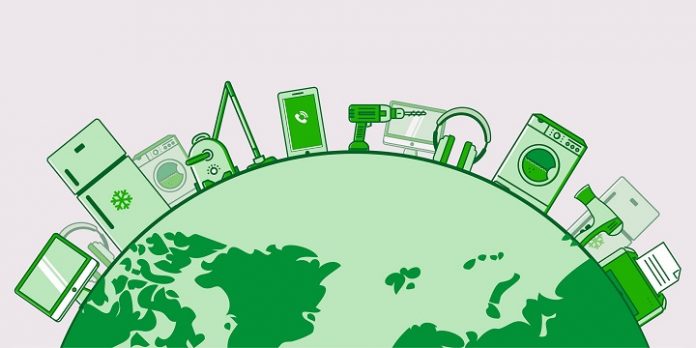E-waste is one of the fastest-growing waste streams with an annual growth rate of 3-5%. The Global E-waste Monitor Report 2020 mentions that 53.7 million metric tonnes (MMT) of e-waste was generated in 2019 globally, and it is expected to reach 74.7 MMT by 2030.
Also, India is the third-largest producer of e-waste and has generated 3.23 MMT e-waste in 2019 alone. India’s rising consumerism and paltry e-waste management ecosystem have placed us in a vulnerable state. Notably, e-waste contains several toxic materials such as lead, cadmium, chromium, brominated flame retardants, or polychlorinated biphenyls. Therefore, unregulated accumulation, landfilling, or inappropriate recycling processes poses a severe threat to human health and the environment.
On the contrary, e-waste can also be considered an “Urban Mine” for metal recovery and energy production. Led by Professor K.K. Pant, his research group in the Catalytic Reaction Engineering Laboratory at Chemical Engineering Department, IIT Delhi, has developed a sustainable technology to tackle the menace of e-waste. This technology is an outcome of the Department of Science and Technology, Government of India, funded project and has been further included for a scale-up in the project supported by the Office of Principal Scientific Advisor (PSA), Government of India under the Delhi Research Implementation and Innovation (DRIIV) initiative.
The developed technology will cater to the need of “Smart Cities,” “Swachh Bharat Abhiyan,” and “Atmanirbhar Bharat” initiatives of the Indian government via waste to wealth generation in decentralized units.
The adopted methodology is a three-step process:
(i) Pyrolysis of e-waste
(ii) Separation of metal fraction, and
(iii) Recovery of individual metals.
Firstly, e-waste is shredded and pyrolyzed to yield liquid and gaseous fuels, leaving behind a metal-rich solid fraction. On further separation using a novel technique, the leftover solid residue yields a 90-95% pure metal mixture and some carbonaceous materials. The carbonaceous material is further converted to aerogel for oil spillage cleaning, dye removal, carbon dioxide capture, and use in supercapacitors.
In the next step, a low-temperature roasting technique is employed to recover individual metals such as copper, nickel, lead, zinc, silver and gold from the metal mixture. It gives a recovery of nearly 93% copper, 100% nickel, 100% zinc, 100% lead and 50% gold and silver each. It is a green process in which no toxic chemicals are released into the environment.
For their project titled, ‘Self- Sustainable E-waste Recycling: Generating Wealth from Waste via Zero Discharge Technology’, the team was awarded the SRISTI-GYTI (Gandhian Young Technological Innovation) Appreciation for the year 2020 and several other awards in the last five years.
The team has successfully installed a 10 kg/h (Kilogram per hour) pyrolysis plant for e-waste recycling at IIT Delhi. It converts all types of e-waste to combustible gases of 28 MJ/kg (Megajoule per Kilogram) calorific value, liquid fuel of 30 MJ/kg calorific value, and a metal-rich solid residue. The gaseous product obtained from the pilot plant is primarily composed of hydrogen and methane whereas the liquid product is rich in hydrocarbons suitable for energy generation. The pilot plant is also equipped with a scrubbing system that captures halogenated compounds traces in the combustible gases.
Prof. K.K. Pant, Project Lead and Head of Chemical Engineering Department, IIT Delhi said, “Electronic waste (e-waste) generation is inevitable and if the problem is not addressed now, it will lead to mountains of solid waste sooner or later. The technology pioneered by our research group is an integrated approach that will provide an environment-friendly solution to treat e-waste with the added advantage of metal recovery and fuel production. We have successfully demonstrated the application of our technology for recycling the Waste Printed Circuit Boards (WPCBs) of computers and mobile phones – a highly complex part of any e-waste.
Therefore, the developed technology can be employed for recycling all types of e-waste as well as plastic waste, and it does not emit any toxic chemicals to the environment. Besides providing a sustainable solution for e-waste recycling, the successful implementation of this technology has the potential to generate a large number of jobs in the waste recycling industry.”
The technology has also been patented and published in internationally reputed journals such as the Journal of Cleaner Production, Journal of Hazardous Materials, Waste Management and the Journal of Environmental Chemical Engineering.








